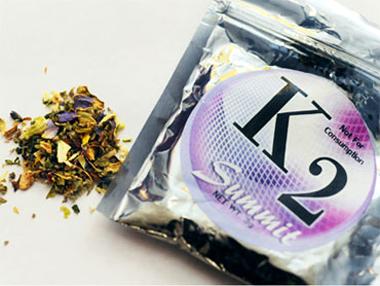What you need to know about synthetic marijuana
April 28, 2015
By: Chris Carroll, MD, FCCP and Deep Ramachandran, MBBS
 Last week, we shared a New York Times article about a recent spike in synthetic marijuana-related hospitalizations. In the first 3 weeks of April, state poison control centers received about 1,000 reports of adverse reactions to spice—the street name for a family of synthetic substances that mimic the effects of marijuana—more than doubling the total from January through March, according to the American Association of Poison Control Centers.
Last week, we shared a New York Times article about a recent spike in synthetic marijuana-related hospitalizations. In the first 3 weeks of April, state poison control centers received about 1,000 reports of adverse reactions to spice—the street name for a family of synthetic substances that mimic the effects of marijuana—more than doubling the total from January through March, according to the American Association of Poison Control Centers.
Our Facebook community showed great interest in this issue and asked many important questions. We reached out to the President of the American Association of Poison Control Centers, Dr. Jay Schauben, to ask a few questions about spice.
Is spice detectable by standard toxicology screens, and does it show up as marijuana in a standard urine toxicology screen?
Schauben: No, the synthetic cannabinoids are a diverse group of agents with a wide variety of chemical structures that will not be detected on normal urine screens looking for the natural product. In fact, this is one of their “selling points”; you can use it and have a clean screen for cannabinoids.
What are the main signs and symptoms that cause people to go to the hospital and what causes them to end up in the ICU?
 |
|
Spice, K2, Moon Rocks, Potpourri, Skunk, and Yucatan Fire are all street names for this deadly drug which is available legally and marketed as a safe alternative to marijuana. Image via drugabuse.gov.
|
Schauben: I wish I could give you a legitimate answer here. Per my response to the previous question, these are a diverse group of compounds with variable structures producing quite variable sets of symptoms. In some cases, psychiatric effects have predominated: hallucinations/delusion, severe agitation, paranoia, suicidal manifestations. Other effects have included significant hyperdynamic states, seizures, respiratory arrest, rhabdo/renal failure, and cardiac arrhythmias. There has been no consistent toxidrome associated with these due to the constantly variable compounds used in the preparations (at times, new each week).
What are some long-term consequences of this drug in people?
Schauben: Undetermined and is based upon the specific compound used, the amount used, the interindividual response, and the time to seek health care for the adverse events.
What is the typical treatment of someone who comes to the ICU with these symptoms?
Schauben: Standard supportive care to manage what you see. Benzodiazepines are applied heavily for the hyperdynamic and agitated states.
What is the prognosis of patients who are admitted to the ICU?
Schauben: Undetermined and is based upon the specific compound used, the amount used, the interindividual response and the time to seek health care for the adverse events.
 Jay L. Schauben is Director of Florida/USVI Poison Information Center – Jacksonville, and President of the American Association of Poison Control Centers.
Jay L. Schauben is Director of Florida/USVI Poison Information Center – Jacksonville, and President of the American Association of Poison Control Centers.